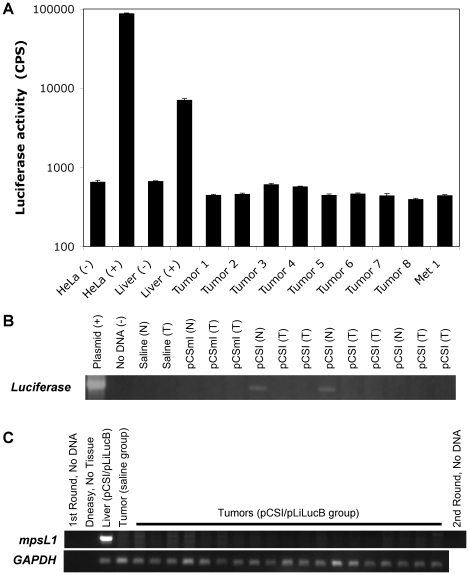Figure 3. Luciferase activity and PCR analysis of tumors from mice in the pCSI/pLiLucB group provide no evidence of ϕC31 integrase activity.
(a) Protein extracts were prepared and the luciferase activity was measured in absolute counts per second (CPS). Controls included HeLa cells given FuGene 6 alone [HeLa (-)] or the CMV-luciferase plasmid pNBL2 via FuGene 6 [HeLa (+)], the normal-appearing part of the tumor-ridden liver taken from either a saline-injected mouse [Liver (-)] and pCSI/pLiLucB-injected mouse [Liver (+)]. Eight tumor samples (Tumor 1 through 8) and one metastasis (Met 1) that were obtained from four animals were also analyzed. The error bars give standard error of the mean for four replicates of each sample. (b) PCR analysis to detect the pLiLucB plasmid by amplification of the luciferase transgene. Plasmid DNA (20 ng pLiLucB) and no DNA controls show specific amplification of luciferase only in the reaction containing plasmid. One mouse each from the saline-only and pCSmI/pLiLucB groups was analyzed for transgene presence in normal-appearing (N) and tumor (T) tissues (none found). Three mice in the pCSI/pLiLucB group were analyzed for transgene presence in normal-appearing (N) and tumor (T) tissues. Luciferase could be detected in 2/3 normal-appearing liver samples and none of the tumors. (c) PCR analysis for integration at the mpsL1 pseudo attP site was done on 18 tumors (lanes 5 through 22) and one metastasis (lane 23) taken from nine mice given pCSI/pLiLucB by hydrodynamic injection. Controls included no DNA (1st round, lane 1 and 2nd round, lane 25), and a DNeasy performed on no tissue (lane 2) to show no contamination from the DNA isolation procedure. Normal-appearing liver from a mouse in the pCSI/pLiLucB group (lane 3) served as the positive control. DNA isolated from a tumor in the saline-only group served as the negative control (lane 4). PCR for the GAPDH gene showed that sufficient DNA was added to all reactions. Seven tumors and one metastasis were subjected to the analysis in both a and c. Six tumors were analyzed by all assays (a, b and c).

